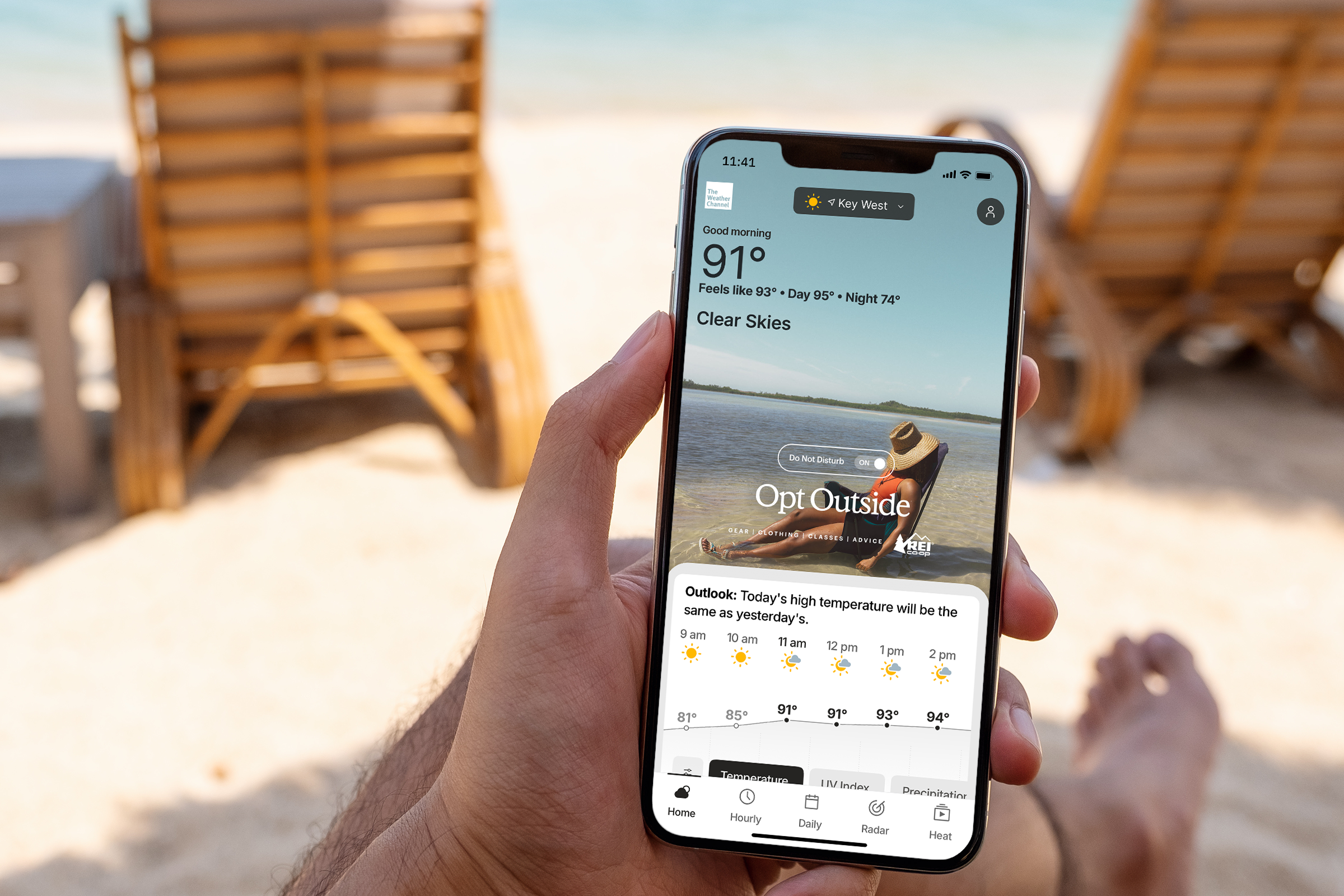Weather intelligence for the future: Crafting a strategic enterprise approach to changing environmental conditions
Continue readingInteractive marketing is an advertising tactic based on user preferences, behaviors, and actions to create a personalized interaction with a brand. Since it centers directly on users, it differs from traditional campaigns aiming to cater to the masses. Interactive marketing can include tactics such as quizzes, surveys, or conversational marketing.
Why is interactive marketing important in advertising?
Interactive marketing allows brands to personalize their interactions with customers and create a more custom experience. Personalization itself is increasingly becoming a priority for consumers, as customers expect better experiences online.
Due to the pandemic, these online interactions have become the prominent face of a brand. Despite the reopenings after the lockdown, these trends are not expected to shift dramatically to favor in-person interactions. Companies looking to stay competitive must learn how to convert the benefits of the in-person experience to their digital platforms.
Types of interactive marketing
There are many types of interactive marketing techniques to explore. Here are some of the most common.
Interactive content
Interactive content is content that is interactive in nature and used to encourage engagement with consumers. Some interactive marketing examples include blogs with embedded videos, quizzes, gated content, and other mixed media elements.
Personalized content
Personalized content meets a user’s unique preferences, demographics, geographic data, and more to create meaningful experiences, whether in a brand’s messaging or ad copy.
Conversational marketing
Conversational marketing is a form of advertising that utilizes AI capabilities to facilitate a personalized conversation with users online. A common type of conversational marketing is a chatbot, which can understand one’s intent and provide answers and recommendations for what a given user is looking for.
Benefits of interactive marketing
Everyone benefits from interactive marketing and it’s no wonder why. Here are some of the top advantages it provides for advertisers and marketers.
Greater personalization
Interactive marketing is about creating a personalized experience for your audience, which has become increasingly important to consumers when choosing a brand to align with. 42% of companies agree that a customized approach can positively influence the business strategy.
Higher ROI
Having consistently positive, personalized experiences with a brand increases the likelihood of leads turning into conversions and repeat buyers. Personalization can increase revenue, consumer interaction time and value. Additionally, 80% of brands interviewed by Segment noted that consumers spend more when their experience is personalized.
Brand loyalty
Consumers become loyal to brands whose messaging resonates with them and aligns with their values. By creating a personalized experience, your company can better ensure that consumers return.
Timely and reliable
Interactive marketing is timely in its ability to create personalized and accurate messages in a way that traditional marketing cannot. Consumers can quickly get answers to their questions at any time with information they can trust.
Challenges associated with interactive marketing
Like all marketing techniques, interactive marketing doesn’t come without its challenges which include:
Lacking insights about the target audience
Without the right tools to gain insights into one’s target audience, interactive marketing is essentially impossible. Some of these marketing tools can be costly or hard to get your business to buy into, and accurate customer data for personalization is still a challenge.
Cookieless targeting
Security and privacy are becoming a huge priority for consumers and brands alike. If you don’t have a cookieless targeting solution to gain insights, people may not feel comfortable interacting with your brand.
If done incorrectly, personalized campaigns can feel invasive and lead to customer dissatisfaction. Cookieless advertising relies on contextual insights, such as location data, weather-triggered ads, or information shared directly via the customer with a conversational marketing tool or opt-in form.
Additionally, legislation around the globe, such as GDPR and the California Consumer Privacy Act, are addressing these consumers’ concerns. With the increasing pressure from consumers and regulations, finding a solution that can deliver an interactive experience while remaining cookieless is becoming more important.
Extending the reach
Because conversational marketing is about a 1:1 interaction, brands may struggle to reach a larger audience, which is necessary for organizations that wish to continue growing.
Getting started with interactive marketing
Getting started with interactive marketing is a process that includes the following steps.
1. Identify your target audience
The first step is knowing who your target audience is. You should find basic and detailed information such as age, residency, political beliefs, financial standing, etc. Your team can start by building out personas and conducting market research.
2. Learn what their preferences are
Interactive marketing is all about leveraging a user’s unique preferences, behaviors, and actions to create a personalized experience for them. This can include things like shopping behavior, their likes and dislikes, and the amount of time spent before making a purchasing decision. Your team may already have some of this data and information.
3. Optimize AI
Utilizing technology can help automate the process of collecting insights about your target audience and using them to create a better future experience for them. Additionally, leveraging an AI conversational and marketing tool allows you to communicate with consumers on a massive scale while delivering tailored recommendations.
4. Find new ways to reach your audience
Marketers can use the insights collected from interactive marketing techniques to discover new ways to reach their target audience. This increases the likelihood of positive future interactions and leads to a sale.
5. Measure results and make adjustments
After testing out different strategies, you’ll want to measure results to see what’s working and what’s not. From there, you can work with your team to revise and adjust your interactive marketing strategy moving forward.
Examples of interactive marketing
A leading entertainment streaming brand uses AI-powered ads to create a custom experience
When Hulu came to The Weather Company, they had the goal of building awareness of the Hulu brand, educating users on Hulu’s services, and differentiating their brand as the preferred streaming service among competitors.
They collaborated with The Weather Company on a custom, targeted AI-powered ad experience with conversations. They leveraged natural language dialog to ask questions about their mood and viewing habits so they could provide unique Hulu programming recommendations based on the dialogue. The solution was also trained to answer frequently asked questions like pricing, programming and technical issues. The campaign led to excellent results which included:
- 44 million total impressions served
- 18 thousand active user sessions
- 3.5 thousand conversations
- 14 thousand total button clicks with 3,000 clicks to Hulu.com
- 3.7x more time spent in the unit versus Google Rich Media interaction rate benchmark
Interactive Marketing Examples
Best Western improves visits with conversational marketing software
Best Western came to The Weather Company with the goal of reaching and engaging more customers during peak holiday weekends when they were in travel planning mode. They collaborated with The Weather Company and utilized conversational marketing to provide personalized travel recommendations and reduce some of the work that comes with planning a trip. The solution was trained on Best Western information and used natural language processing to provide a 1:1 dialogue with each user. They were able to offer travel recommendations, tips, tricks, and inspiration for upcoming destinations. This campaign led to meaningful results like:
- 2.2x higher time spent with Conversations versus Google Rich Media interaction time benchmark
- 42 seconds average time spent within the Conversations unit per session
- 48.6% incremental lift in visits to Best Western locations versus those who had already planned to visit Best Western hotel properties
Final thoughts
Interactive marketing is here to stay; we can expect more businesses to utilize techniques like interactive content, personalized content, and conversational marketing to stay competitive. Whether engaging more audiences, improving brand loyalty, or achieving greater ROI, interactive marketing can help achieve your business goals.
Ready to learn more about interactive marketing? Discover the conversational marketing solution from The Weather Company.
Let's talk
What’s your weather strategy? To learn more about increasing campaign efficiencies and personalizing messages at the most relevant moments, contact our advertising experts today.
Contact us






